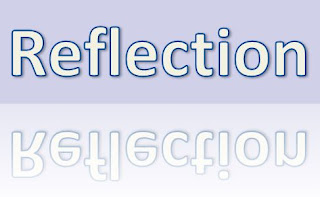I
liked the first article and its simple, yet clear definition of the topic. The fact
they used the six key words as prompts probably helped them to stay focused on
their goal.
Teacher
researchers are the topic of everything we have been studying. The six
descriptive words, given in the first essay were helpful in its clarification.
It would clearly be intentional, as
all research begins with a purpose. Deciding on the topic and then exploring it
“as an important aspect of teaching and learning” (23). Any research starts out
on a given path which often changes direction as the process intensifies. The
intended goal should be a better understanding of the intended topic as well as
the paths traversed during the learning process.
The
next descriptive word is systematic;
the claim is that teacher researchers use methods and strategies to carefully
document their findings. They also identify and discuss theories and assumptions,
as they collect and analyze data for triangulation .Comparison is constant as
they challenge findings and discuss the different interpretations of their
colleagues. This systematic process creates a clearer picture of their research
process.
Moving
along, this research is deemed a public
endeavor as it encourages challenges and different perspectives. Voluntary seems obvious; this is a choice
which involves risk as teachers re-examine their teaching process. They must be
honest about the value of their in-class projects.
That
brings us to ethical; I would really
hope this would be at the core of the process. A teachers primary
responsibility should be to their students, so they would seemingly strive to “collect
data that is representative” (25) and involve students to discuss, examine, and
challenge their findings. Which leads us to its contextual aspect; this descriptive value is needed for both
teaching and learning processes. The ability to explain and clarify the entire
context, on which it is based, helps unearth the assumptions within.
The
second essay “The Teacher as Researcher” by Marian M. Mohr was delightful. She
documents her road to becoming a teacher-researcher as something I could see
myself doing. She found she needed to write down what was happening in the
classroom; as a new teacher, things were happening to fast to process. The
ability to write down what is overwhelming so you can read it over later, when
you have time and presence of mind, is a reassurance you’re not missing
something important. You might leave something out but you are trying to keep
track of as much as possible. Through this process, she found that she was able
to be more attentive but also was getting to understand her class and its
habits. I especially liked her “oops” moment with the word aggressive. The ability
to openly learn from her students, helped them recognize that although she was
teaching them, they were learning together.
Her
respect for the students learning/ writing process was inspiring as well as interesting.
The various noises and habits seem very distracting, yet they made it work and
she incorporated their help in deciding on class topics. This all began with
her keeping that journal; I can see myself doing something similar if I become
the teacher I hope to be. It is interesting how her thinking evolved from
someone who was against the idea of teacher-researchers to the understanding
she gained, through her simple desire to become a good teacher for her students.
The
last study included teachers from different levels of education who were
interested in classroom/ teacher research. Some of these had participated in a
pilot seminar through the National Writing Project and the National Center for
the Study of Writing. The seminar was a bi-weekly meeting for three hours in
the evening, with activities to help formulate and examine questions on writing
from a teachers view.
Based
on the Marian Mohr model, the impressive essay discussed above, teachers met in
a relaxed atmosphere, and shared ideas as they experimented to see what might
work. The facilitator (Mike) guided them to share their reflections with
colleagues as well as through writing. He reminded them that: “Process (was) more
important than product.”
The
findings were that teachers needed more TIME to sit down and write. They felt
the structure and content of the group meetings needed additional comments, but
the positive outcomes were reflection, networking, and a renewed view of
themselves as professionals. They enjoyed the journal sharing and discussions
and many had individual research “odysseys.” Most felt their teaching
performance improved by this classroom-based research, and felt they had become
“more reflective practitioners.”
There
was an increased interest in the work of other researchers from this
experience, a sort of professional evolution. Almost all of the teachers
submitted papers to “validate their own perceptions." As one participant
noted: “Collecting data makes me ask good questions of kids who give me good
answers, answers that help me improve as a teacher.” That sounds like the most
important results for the educators in attendance.












